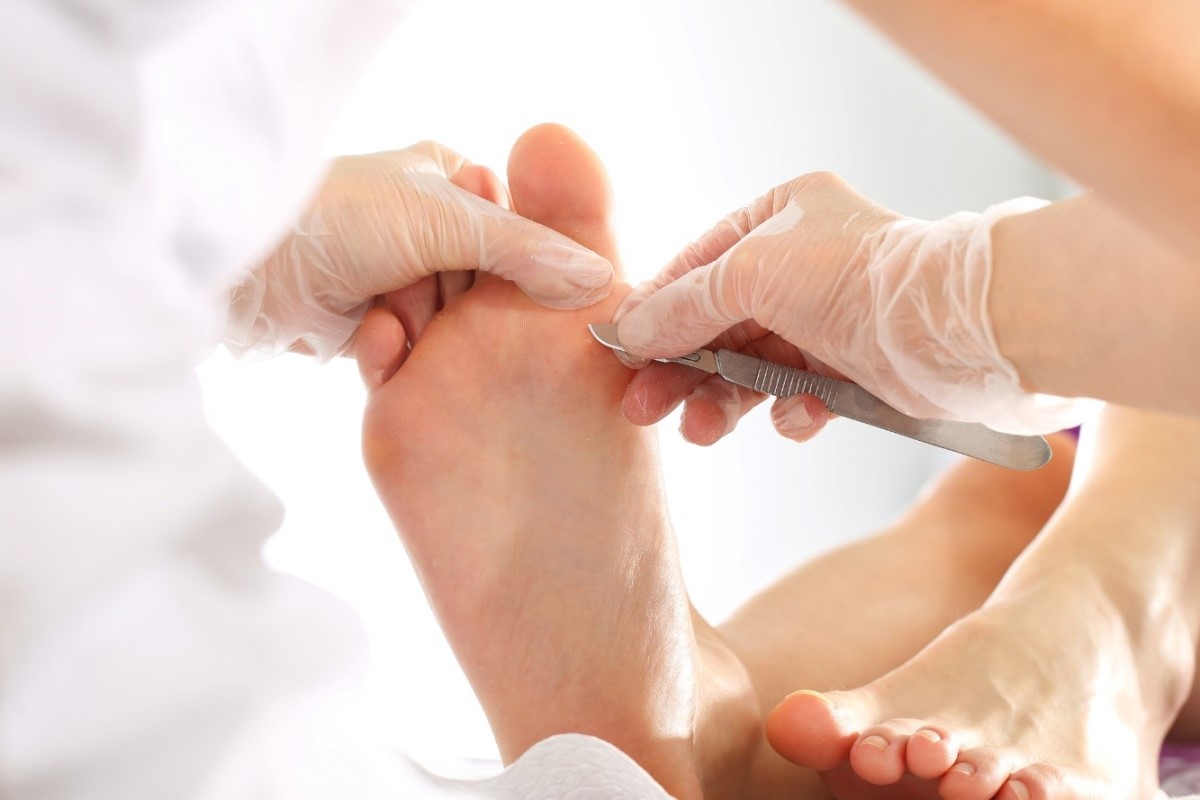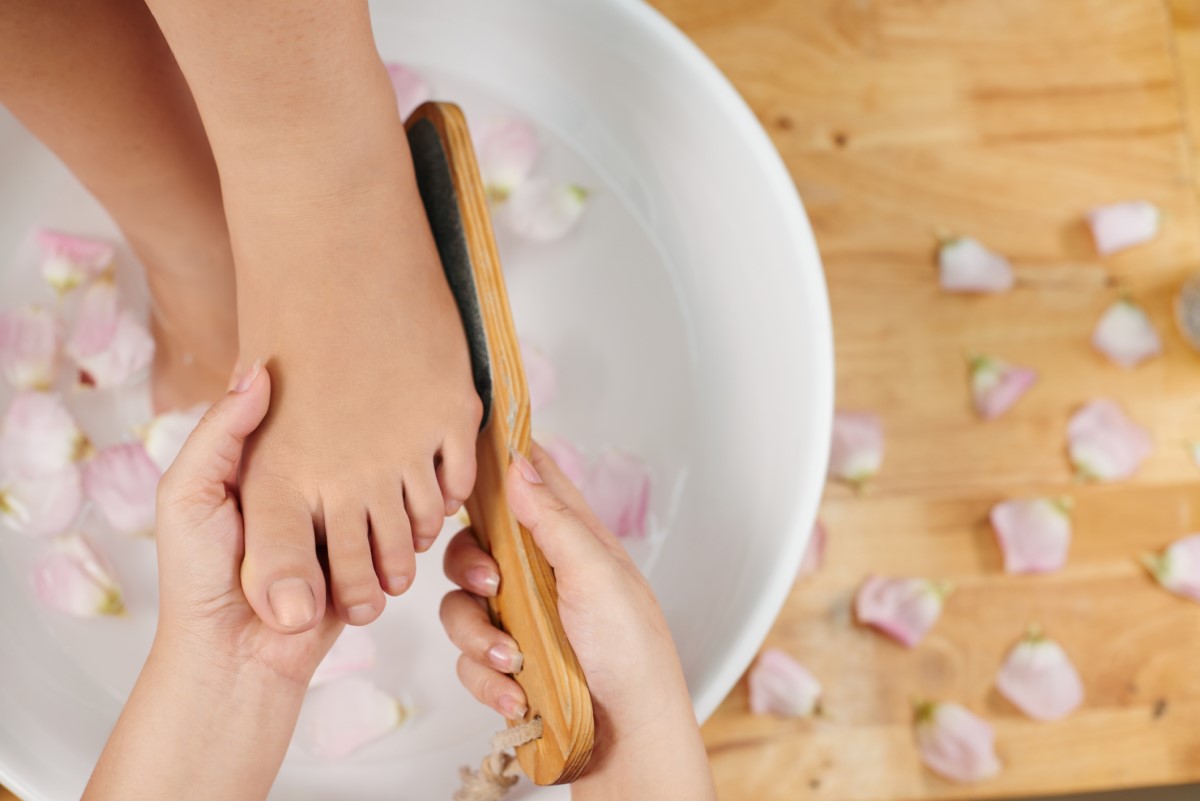Treatment of corns: what works to eliminate it? Drugs, solutions and more
Under no circumstances should we attempt to cut or remove the growth ourselves.
Failure to do so can lead to serious health complications.
In practice, there are three options for removing corns:
1. Symptomatic treatment
At home, patients soak the affected area in warm water and use a pumice stone to remove the hyperkeratotic tissue.
Salicylic acid or lactic acid application is used for topical treatment.
Are we confusing salicylic acid with acetylsalicylic acid?
Acetylsalicylic acid
Acetylsalicylic acid is taken in tablet form.
It has different effects:
- analgesic
- antipyretic
- antiphlogistic
- antiplatelet
Acetylsalicylic acid is biotransformed in various tissues. It loses its acetyl group to form salicylic acid. This process is called deacetylation. It forms three main metabolites - salicylic, salicyluric and gentisic acid.
Salicylic acid is the active metabolite.
Salicylic acid
Salicylic acid is a white crystalline powder, odourless and with a typical sweet and sour taste.
Salicylic acid is mainly used for the topical treatment of psoriasis, acne, rosacea, dermatomycoses, hyperkeratoses and seborrhoeic dermatitis.
The table shows the concentration, form and effect
| CONCENTRATION | DOSAGE FORM | EFFECT |
| 1-2 % | alcoholic solution | antiseptic, antiseboric, antipruritic (anti-itch) |
| 3-10 % | ointment, cream, oil solution | removal of scales and softening of crusts in seborrheic dermatitis, psoriasis |
| 5-15 % | ointment | softening of the stratum corneum |
| 40-60 % | ointment | keratolysis of warts and scurvy |
2. Removal of mechanical cause
The doctor's treatment plan focuses on removing the mechanical cause of the cornea.
Corns are the result of repeated friction or pressure on the affected area. For this reason, the doctor must know the causes of the skin lesions.
When treating soft corns, the patient must be instructed on how to minimize excessive foot moisture.
3. Surgical removal
Surgical correction of foot deformities and bony prominences should be performed by a surgeon to straighten the foot. This prevents mechanical stress and the development of painful lesions.

What products can we get at the pharmacy?
Corns patch
On the market we can find different types of plasters.
1.
Patches with salicylic acid
It is mainly used due to its beneficial properties:
- good fixation
- isolation of the wound from the external environment
- easy application
- pain relief
How to apply the patch?
The ideal time to apply the patch is in the evening.
After bathing your feet, apply the patch to the cornea. Change the patch every day.
After 4 days, the corneal eye can be removed in warm salt or soapy water.
2.
Hydroactive patches for corns, acid-free
The patches are designed to protect the cornea and reduce pressure. They help relieve pain. They create a moist environment that helps the cornea heal.
Beneficial properties of the patches include:
- waterproof (protects the wound from dirt, bacteria)
- breathability (allows the skin to breathe)
- long-lasting effect
Eye solution
The solution contains collodion (a solution of nitrated cellulose in an alcohol mixture), salicylic acid and lactic acid.
The collodium forms the viscous base of the solution. It allows precise application of the drug to the eye. It forms a thin film that helps to hydrate and promotes the destruction of hyperkeratotic tissue.
Salicylic acid softens the surface layer of the skin and has the ability to dissolve intercellular matter (keratolytic effect).
Lactic acid influences the keratinisation process. It reduces hyperkeratosis, has an etching and antiseptic effect.
Swallowwort extract contains alkaloids which have antimicrobial and antifungal effects when used externally.
The other active ingredient of the solution is purified turpentine essential oil from pine resin (Terebinthinae etheroleum rectificatum). It contains turpentine compounds that are antiseptic, promote tissue vascularisation, increase resorption of pathologically altered tissue and contribute to the formation of granulation tissue.
The solution contains an extract of the non-woody parts of the Western Thuja Occidentalis, which contains monoterpenes.
Monoterpenes have an antiseboric effect (reduce sebum production), toning and smoothing effect.
The beneficial properties of the solution include:
- painless treatment, which is well tolerated by children.
- easy application (suitable for home use)
- comprehensive action including subsequent skin regeneration
How should I apply the solution?
The solution is applied in the amount of 1-3 drops 2-3 times a day.
The solution is applied using a stick on the cap. The liquid dries quickly and forms a film on the skin surface.
Apply the solution to the affected area until the cornified skin can be painlessly removed.
Before removing the top layer of tissue, it is recommended to immerse the affected area in warm water with added table salt for five minutes.
Dry the skin. If the tissue does not release itself, rub the surface with pumice stone.
Pen for clavus
A clavus pen is a medical device used to treat hardened, thickened areas of the skin.
What is its use?
The application of the pen consists of two steps:
- Step:
- Using the pen, scraping towards you to remove the top layer of the corium.
- Use the scraper cap to remove the skin that is coming off. Rinse the scraper with water.
- Allow the scraper to dry. Then replace the cap.
- Repeat the procedure every third day.
- Step:
- Using a pointed applicator, cover the entire surface of the chicken eye with the liquid product (1-2 applications).
- Allow to dry (1-2 minutes).
1-2 applications (1-2 applications)
The stick is considered a supportive agent. It helps in wound healing and removal of hyperplastic skin formations.
Application of the stick
Apply the stick 1-2 times a day. Apply with a light rubbing motion.
Liquid nitrogen treatment
In the dermatological outpatient clinic, liquid nitrogen treatment is used to remove unwanted skin growths.
A special metal applicator or cotton swab is used to apply liquid nitrogen.
During the procedure, the damaged area is exposed to extremely low temperatures (-196 °C).
The target cells are frozen and then die. After treatment, the dead area turns red. A scab forms, which falls off after a certain period of time.
The liquid nitrogen treatment is suitable for women, men and children.
Other treatment options
- surgical removal of the lesion
- use of a laser
What type of pedicure is best?
Medical pedicure is considered the most suitable type of pedicure.
By dry sanding, the corns are easily removed. The treatment is quick, painless and bloodless.
If there is also skin build-up near the corns, a combination pedicure is suitable.











